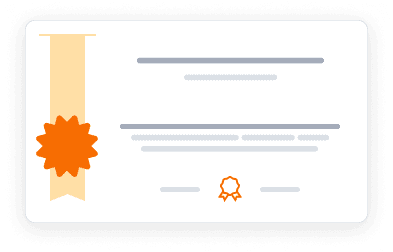Explore archaeology's role in preserving cultural heritage through field techniques, digital preservation, and protecting humanity's shared past.
Explore archaeology's role in preserving cultural heritage through field techniques, digital preservation, and protecting humanity's shared past.
This comprehensive course examines archaeology's crucial role in discovering and protecting cultural heritage as humanity's universal patrimony. Students learn about archaeological methods, from practical field techniques to modern digital preservation technologies. The curriculum covers the evolution of archaeology as a discipline, incorporating natural sciences and ICT for scientific historical reconstructions. Using the exemplary case of Ebla, the course demonstrates the integration of traditional archaeology with cutting-edge preservation techniques. Special focus is given to 3D digitization of cultural objects and the European Data Model framework for managing cultural heritage data. The course emphasizes archaeology's responsibility in preserving human memory for future generations.
4.4
(281 ratings)
16,921 already enrolled
Instructors:
English
What you'll learn
Understanding archaeology's role in cultural heritage preservation
Master basic archaeological field techniques
Learn digital preservation methods and 3D modeling
Analyze historical significance of archaeological discoveries
Apply modern technologies to heritage conservation
Explore international heritage protection frameworks
Skills you'll gain
This course includes:
425 Minutes PreRecorded video
10 assignments
Access on Mobile, Tablet, Desktop
Batch access
Shareable certificate
Get a Completion Certificate
Share your certificate with prospective employers and your professional network on LinkedIn.
Created by
Provided by

Top companies offer this course to their employees
Top companies provide this course to enhance their employees' skills, ensuring they excel in handling complex projects and drive organizational success.





There are 9 modules in this course
The course explores archaeology's vital role in preserving cultural heritage through both traditional and modern approaches. Students learn about archaeological methods, from field techniques to digital preservation, while understanding the discipline's evolution and current challenges. The curriculum emphasizes the importance of protecting cultural heritage using modern technologies like 3D digitization and data management systems. Case studies, including the exemplary excavation of Ebla, demonstrate the integration of traditional archaeology with contemporary preservation methods.
Course Information
Module 1 · 1 Hours to complete
The recovery of human past
Module 2 · 1 Hours to complete
Birth of archaeology I
Module 3 · 1 Hours to complete
Birth of archaeology II
Module 4 · 59 Minutes to complete
Birth of archaeology IV
Module 6 · 1 Hours to complete
Digitizing Cultural Objects I
Module 7 · 1 Hours to complete
Digitizing Cultural Objects II
Module 8 · 1 Hours to complete
Digitizing Cultural Objects III
Module 9 · 2 Hours to complete
Fee Structure
Payment options
Financial Aid
Instructors
Network Systems Expert and IoT Innovation Leader
Andrea Vitaletti serves as Associate Professor at Sapienza University of Rome, where he has built an impressive career since earning his Ph.D. in Computer Science in 2002. His academic journey includes research visits to prestigious institutions like ETHZ and AT&T Research Labs. His research portfolio includes over 60 published papers focusing on algorithms and protocols for wireless networks, IoT, and distributed data management. As founder of successful tech ventures including WLAB (sold in 2016) and WSENSE (left in 2019), he demonstrates expertise in technology commercialization. Currently co-founder of GIUSTA, he continues to bridge academic research with practical applications. His leadership extends to coordinating major EU projects, including the FET OPEN project PLEASED, while managing a research group at the Wireless Sensor Networks lab at DIAG. Through his Coursera course "Recovering the Humankind's Past and Saving the Universal Heritage," he shares his expertise in applying wireless sensor networks to cultural heritage preservation. His teaching encompasses networking, data management, and IoT topics in both Engineering and Product Design programs.
Near Eastern Archaeology Expert and Ancient Warfare Scholar
Dr. Davide Nadali serves as Associate Professor in Near Eastern Archaeology at Sapienza University of Rome, where he has made significant contributions to understanding ancient Mesopotamian civilization. Since earning his Ph.D. in 2006 focusing on Neo-Assyrian bas-reliefs, he has led numerous archaeological expeditions and research projects. His work spans from Syria's Ebla, where he has been involved since 1998, to southern Iraq's Tell Zurghul (ancient Nigin) where he co-directs excavations since 2014. His research interests encompass ancient warfare, Assyrian art and architecture, and the interpretation of ancient images in Mesopotamian and Syrian contexts. As Principal Investigator of "Time through Colours," a nationally funded project analyzing painted artifacts, he demonstrates his commitment to innovative archaeological research methods. His expertise extends to early urban development, particularly in the Early Dynastic Period of southern Mesopotamia, while his recent work includes the study of water management in ancient Near Eastern societies. Through his Coursera course "Recovering the Humankind's Past and Saving the Universal Heritage," he shares insights from his extensive fieldwork and research experience
Testimonials
Testimonials and success stories are a testament to the quality of this program and its impact on your career and learning journey. Be the first to help others make an informed decision by sharing your review of the course.
Frequently asked questions
Below are some of the most commonly asked questions about this course. We aim to provide clear and concise answers to help you better understand the course content, structure, and any other relevant information. If you have any additional questions or if your question is not listed here, please don't hesitate to reach out to our support team for further assistance.





